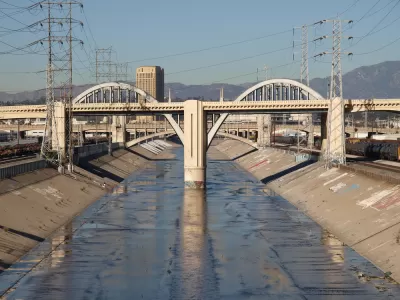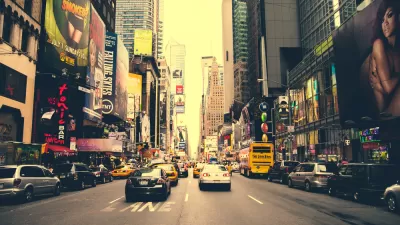How can the contemporary concepts in ecology studies—adaptability, resiliency, and flexibility—advance urban planning practices?

We used to think our natural world was stable. Stability meant certainty. A certain input into the system would create a reproducible output. If an objective was reached by a given set of actions, reproducing those actions would always result in the same objective being met. It appears, however, that the modern notions of stability and certainty are a fallacy.
Contemporary ecology is informing us that planning objectives are highly contextual. An output by actions in one circumstance won’t be reproduced by the same actions in another one. I fear that although research in urban planning is highly dynamic and informative, the outputs are less so. As research advances in how cities might evolve, is planning and developing keeping apace?
I write this article for heuristic value to ask the question: What might urban planning look like through a lens of ecology studies? I intend to raise questions, to increase debate, rather than to dictate some design solution because, well, that might be an awfully modern thing to do.
Where might the practice of planning benefit by an ecological gaze? If we accept the premise that committing the same actions will not always lead to the accomplishment of the same objective, where might we let go of objectives? Instead of actions seeking objectives, what if we guided all by established principles? For example, a planning objective wouldn’t be to increase walking—that could be an objective where design strategies ultimately had little impact on walking and thus the objective not being met—but rather to understand walking as guided by a principle. Thus under a larger "truth," a "walkable" environment would be a success even if there was no discernible increase in walking. How might a failure become a success through the ecology gaze?
Theories in contemporary ecology can change our cognitive frame of reference. One truth we might seek could be to advance the services provided by nature that we depend on. Instead of laying down cities for use: road networks, homes, business, and institutions (no matter how "mixed-used" that network is)—what if a city was designed to be responsive to those services provide by nature? How would land be planned and developed to aid pollination and nutrient cycling? How could it better regulate air and water quality? How could our built environment be resilient to natural hazards and disease outbreaks?
For example, a city that advances the ecological value of habitat connectivity would also be one for walking. Narrow roads, shorter blocks, and trees for beauty serve both human and wildlife values; thus if human use falls short, wildlife value might be advanced.
Fortunately, the practice of urban planning is moving away from inefficient and unproductive single-function lands. Hard surfaces are being vegetated. Riparian areas are being re-established rather than fortified with concrete. Underused turf grass is being replaced by gardens. The camber of streets is being inverted to hold and channel storm water away from properties rather than divert waters into often inundated culverts.
This is a slim list of advancements in urban design practices. For the most part, however, they remain marginal actions. Our roads are wide; our roofs are hard; our landscaping is mono-cultural. We put up chain link fences. Storm water goes into pipes underground. We continue to construct the environment rather than respond to it. Maybe we continue such practices because we’re objective-based rather than principle-based. Maybe we think inputs will get to a prescribed outputs. An ecology gaze might augment our ways.
Principles help give direction in an unstable world. Urban planning practices could be based on a purposeful trajectory aimed at principles.[i] Locally derived truths—that might resonate globally—could guide our actions.
The natural world is not stable nor are we separate from it. Maybe urban planning based on ecosystem value, i.e., actions that attempt to benefit the environment while recognizing our place in it, would advance cities to be adaptable, resilient and flexible—just where contemporary thinking in ecology directs us to look. If nothing else, ecological thinking would help us remove institutional boundaries, to cease thinking that road design, or open space design, or energy production, are separate.
What other principles could guide us? What actions should we be taking? How would embracing an ecological gaze advance urban planning, both the field of inquiry and its constructs? I look forward to the discussion.
Connect Steven on Twitter @stevenpsnell or Facebook stevenpsnell.
[i] Reed, C., Lister, N. (2014). “Ecology and Design: Parallel Genealogies. “All ecosystems are constantly evolving, often in ways that are discontinuous and uneven. While some ecosystem states are perceived by us to be stable, this is not strict stability in a mathematical sense; this is simply our human, time-limited perception of stasis. The work of Canadian ecologist C.S. “Buzz” Holling pioneered this concept in terms of resource management. He referred to ecosystems as “shifting steady-state mosaics,” implying that stability is patchy and scale-dependent, and is neither a constant nor a phenomenon that defines a whole system at any one point in time or space.” Accessed on June 15, 2014. http://places.designobserver.com/feature/projective-ecologies-parallel-genealogies/38423/

Alabama: Trump Terminates Settlements for Black Communities Harmed By Raw Sewage
Trump deemed the landmark civil rights agreement “illegal DEI and environmental justice policy.”

Planetizen Federal Action Tracker
A weekly monitor of how Trump’s orders and actions are impacting planners and planning in America.

The 120 Year Old Tiny Home Villages That Sheltered San Francisco’s Earthquake Refugees
More than a century ago, San Francisco mobilized to house thousands of residents displaced by the 1906 earthquake. Could their strategy offer a model for the present?

LA’s Tree Emergency Goes Beyond Vandalism
After a vandal destroyed dozens of downtown LA trees, Mayor Karen Bass vowed to replace them. Days later, she slashed the city’s tree budget.

Sacramento Leads Nation With Bus-Mounted Bike Lane Enforcement Cameras
The city is the first to use its bus-mounted traffic enforcement system to cite drivers who park or drive in bike lanes.

Seattle Voters Approve Social Housing Referendum
Voters approved a corporate tax to fund the city’s housing authority despite an opposition campaign funded by Amazon and Microsoft.
Urban Design for Planners 1: Software Tools
This six-course series explores essential urban design concepts using open source software and equips planners with the tools they need to participate fully in the urban design process.
Planning for Universal Design
Learn the tools for implementing Universal Design in planning regulations.
Ada County Highway District
Clanton & Associates, Inc.
Jessamine County Fiscal Court
Institute for Housing and Urban Development Studies (IHS)
City of Grandview
Harvard GSD Executive Education
Toledo-Lucas County Plan Commissions
Salt Lake City
NYU Wagner Graduate School of Public Service






























